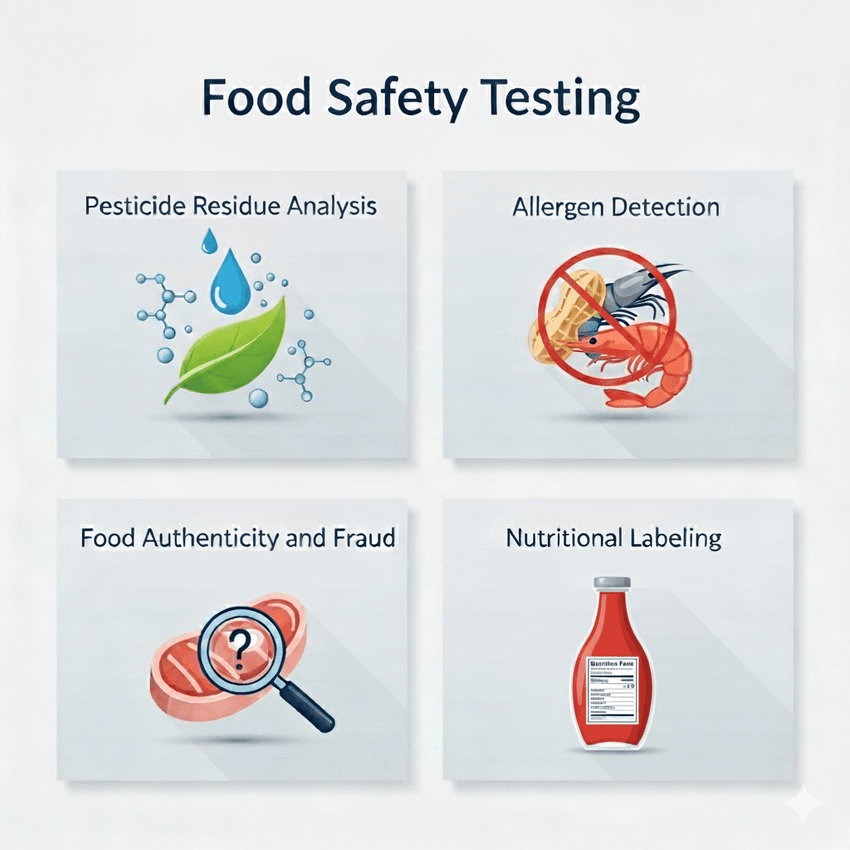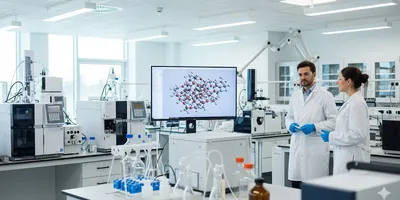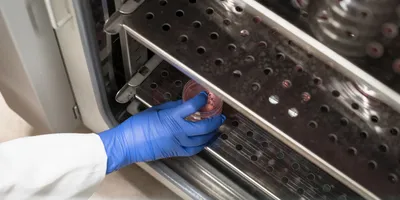Analytical chemistry applications are fundamental to quality, safety, and innovation in the intricate world of science and industry. This is the science of measurement, focused on identifying and quantifying the chemical components of a substance. For laboratory professionals, understanding the depth and breadth of this discipline is not merely academic—it is fundamental to every aspect of daily work, from ensuring the purity of a life-saving drug to identifying a contaminant in our food supply.
Analytical chemistry provides the tools to answer critical questions: What is a substance made of? How much of each component is present? Is this sample authentic? Is it safe? The answers to these questions underpin the integrity and reliability of products and processes across a vast range of sectors. This article will delve into the diverse and impactful analytical chemistry applications, showcasing how this field is not just a branch of chemistry, but a crucial, multi-faceted discipline that safeguards public health, drives technological advancement, and underpins the global economy.
Pharmaceutical Analysis: Key Analytical Chemistry Applications for Drug Purity & Safety
The pharmaceutical industry is perhaps the most prominent beneficiary of analytical chemistry's precision and rigor. From the initial research and development (R&D) of a new drug to its final release on the market, analytical methods are used at every stage to ensure quality, safety, and efficacy. The stakes are incredibly high; an error in analysis could lead to ineffective medication or, worse, a dangerous outcome for the patient.
Analytical chemistry applications in pharmaceuticals begin in R&D, where scientists use techniques to identify and characterize new chemical entities. Mass spectrometry (MS) and nuclear magnetic resonance (NMR) spectroscopy are essential for determining the molecular structure of a potential drug. Once a candidate molecule is identified, analytical chemists develop methods to quantify its presence and purity, a critical step before clinical trials can begin.
The primary function of analytical chemistry in this sector is quality control (QC). Every batch of raw materials, every intermediate product, and every final drug tablet or vial must be meticulously tested. High-performance liquid chromatography (HPLC) is a workhorse in pharmaceutical QC, used to separate and quantify the active pharmaceutical ingredient (API) from impurities, degradation products, and excipients. Gas chromatography (GC) is employed for volatile compounds, such as residual solvents, which must be kept below specified limits for safety.

Analytical chemistry has several uses in the pharmaceutical industry.
GEMINI (2025)
- Purity and Potency Testing: Analytical methods are used to confirm the identity and concentration of the API. This ensures that each tablet or capsule contains the correct amount of medicine.
- Stability Studies: Drugs must remain stable and effective throughout their shelf life. Analytical chemists use techniques to measure the rate of degradation under various conditions (temperature, humidity), helping to determine the expiration date.
- Impurity Profiling: Even tiny amounts of impurities can be toxic. Analytical methods are used to identify and quantify these impurities, ensuring they are below regulatory thresholds. For example, a new class of genotoxic impurities called nitrosamines has recently become a major focus, requiring extremely sensitive analytical techniques to detect their presence.
- Dissolution and Release Testing: For solid dosage forms like tablets, analytical chemistry is used to measure how quickly the drug dissolves in a solution that mimics the body's environment. This ensures the drug is released at the intended rate for maximum therapeutic effect.
The regulations governing the pharmaceutical industry, such as those from the FDA and EMA, are incredibly strict. This reliance on analytical data makes the field a cornerstone of modern medicine, directly impacting patient well-being on a global scale.
Food & Environmental Safety: Critical Analytical Chemistry Applications for Public Health
Analytical chemistry's role in safeguarding public health extends far beyond medicine. It is a critical component of two other vital sectors: food safety and environmental monitoring. The principles are similar—identify and quantify—but the matrices and target analytes are vastly different and often more complex.
In food safety testing, analytical chemistry ensures that the food we consume is free from harmful contaminants, allergens, and fraudulent ingredients. The modern food supply chain is complex, and the potential for contamination from pesticides, heavy metals, or bacteria is a constant concern.

Analytical chemistry plays a large role in food safety testing.
GEMINI (2025)
- Pesticide Residue Analysis: Gas chromatography-mass spectrometry (GC-MS) and liquid chromatography-tandem mass spectrometry (LC-MS/MS) are used to screen fruits, vegetables, and other food products for trace amounts of pesticides.
- Allergen Detection: For individuals with severe allergies, even trace amounts of an allergen can be life-threatening. ELISA (Enzyme-Linked Immunosorbent Assay) and other immunoassays are used to detect allergens like peanuts or milk in food products.
- Food Authenticity and Fraud: The use of analytical techniques to detect food fraud is a growing field. For example, adulteration of olive oil with cheaper vegetable oils can be detected by analyzing the fatty acid profile using GC.
- Nutritional Labeling: Analytical methods are used to determine the fat, protein, sugar, and vitamin content of food products, ensuring accurate nutritional information is provided on labels.
In environmental analysis, analytical chemistry is a tool for monitoring the health of our planet. It provides the data needed to understand the impact of pollution and to enforce environmental regulations.
- Water and Soil Analysis: Analytical chemists test water and soil for pollutants such as heavy metals, polycyclic aromatic hydrocarbons (PAHs), and chlorinated pesticides. Inductively coupled plasma-mass spectrometry (ICP-MS) is highly sensitive for detecting heavy metals in water samples.
- Air Quality Monitoring: Air samples are analyzed for a range of pollutants, including nitrogen oxides, sulfur oxides, and volatile organic compounds (VOCs), which can contribute to smog and acid rain.
- Contaminant Source Identification: When contamination is found, analytical techniques can be used to "fingerprint" the pollutant and trace it back to its source. This is crucial for remediation efforts and for holding polluters accountable.
The convergence of food and environmental concerns often requires a multi-faceted analytical approach. For instance, detecting a pesticide in a food sample might lead to an investigation of the water supply used to irrigate the crops, creating a seamless loop of investigation and regulation that protects public health on a massive scale.
Advanced Lab Management Certificate
The Advanced Lab Management certificate is more than training—it’s a professional advantage.
Gain critical skills and IACET-approved CEUs that make a measurable difference.
Forensic & Petrochemical Analysis: Unlocking Hidden Details with Analytical Chemistry
Beyond the more common applications, analytical chemistry plays a dramatic and essential role in fields that often deal with the unknown. In both forensic and petrochemical analysis, the challenge is to identify and characterize complex, often heterogeneous, mixtures or trace amounts of substances.
Forensic chemistry applies analytical methods to legal investigations. Whether it's identifying a substance found at a crime scene or confirming the presence of a controlled substance, the results must be irrefutable and stand up in a court of law.

Analytical chemistry is important in the world of forensics.
GEMINI (2025)
- Drug Identification: A suspected drug sample is analyzed using GC-MS to identify and quantify the active substance, which can be critical for criminal prosecution.
- Explosives and Arson Residue: After an explosion or fire, analytical chemists can examine trace evidence to identify the components of an explosive device or the accelerant used to start a fire.
- Trace Evidence Analysis: Tiny fragments of paint, fibers, or soil can link a suspect to a crime scene. Advanced techniques like scanning electron microscopy with energy-dispersive X-ray spectroscopy (SEM-EDX) can identify the elemental composition of these samples.
- Toxicology: Forensic toxicologists use analytical chemistry to test biological samples (blood, urine) for the presence of drugs, poisons, or alcohol, which can be crucial for determining the cause of death or impairment.
In petrochemical analysis, analytical chemistry is used to understand the composition of crude oil and its refined products, ensuring quality, safety, and efficiency in a multi-trillion-dollar industry.
- Crude Oil Characterization: Before refining, crude oil is analyzed to determine its composition, including the proportions of different hydrocarbons. This "fingerprinting" allows refineries to optimize their processes for maximum yield.
- Fuel Quality Control: Gas chromatography is extensively used to test gasoline, diesel, and jet fuel to ensure they meet quality specifications and are free from contaminants that could damage engines.
- Environmental Compliance: Analytical methods are used to measure the sulfur content in fuels, ensuring they comply with environmental regulations aimed at reducing air pollution.
- Lubricant Analysis: The composition of lubricants is analyzed to monitor their condition and predict when machinery needs maintenance, preventing costly breakdowns.
In both of these fields, analytical chemistry provides the critical evidence needed to make informed decisions, whether it's solving a crime or optimizing a complex industrial process.
Analytical Chemistry Toolkit: Core Principles & Methodologies for Laboratory Professionals
The broad range of analytical chemistry applications is made possible by a powerful toolkit of techniques and instruments. Understanding the principles behind these methods is essential for any laboratory professional, as it allows for the proper selection of a technique and the interpretation of the resulting data.
Chromatography: The Art of Separation
At its core, chromatography is a separation technique. It is used to separate a complex mixture into its individual components. The principle is based on the differential distribution of components between a stationary phase and a mobile phase. As the mobile phase (gas or liquid) carries the sample through the stationary phase (solid or liquid), the components travel at different rates, leading to their separation.
- Gas Chromatography (GC): Used for volatile compounds. The mobile phase is a gas (e.g., helium), and the stationary phase is a liquid or solid coated inside a long, thin column. GC is ideal for petrochemical analysis and for detecting residual solvents in pharmaceuticals.
- Liquid Chromatography (LC): Used for non-volatile compounds. The mobile phase is a liquid (e.g., a mixture of water and acetonitrile), and the stationary phase is a solid packing material inside a column. HPLC is the most common form of LC and is indispensable for pharmaceutical analysis of APIs.
- Ion Chromatography (IC): A specialized form of LC used to separate and quantify ions and polar molecules. It is critical for analyzing water and environmental samples.
Spectroscopy: Unlocking Molecular Fingerprints
Spectroscopy uses the interaction of light or other radiation with matter to determine its composition. Each molecule has a unique spectral "fingerprint" that allows for its identification.
- Mass Spectrometry (MS): This technique measures the mass-to-charge ratio of ions. When coupled with a separation technique like GC or LC, it becomes an incredibly powerful tool for identifying unknown compounds, making it a cornerstone of forensic chemistry and food safety testing.
- Infrared (IR) Spectroscopy: IR light interacts with molecular vibrations. The resulting spectrum can be used to identify functional groups in a molecule, providing key structural information.
- Ultraviolet-Visible (UV-Vis) Spectroscopy: Measures the absorption of UV or visible light by a sample. It is a simple and widely used technique for the quantification of substances in a solution, commonly used in pharmaceutical analysis for routine concentration checks.
- Nuclear Magnetic Resonance (NMR) Spectroscopy: Provides detailed information about the carbon-hydrogen framework of a molecule. While complex and time-consuming, it is the gold standard for determining molecular structure in pharmaceutical R&D.
The Future of Analytical Chemistry Applications
The reach and impact of analytical chemistry applications are immense and often unseen by the public. From the drugs we take to the food we eat, the air we breathe, and the evidence that secures justice, analytical chemistry is the invisible force that guarantees quality, safety, and integrity. For laboratory professionals, a deep understanding of these principles and techniques is more than a skill set—it's a commitment to precision and a contribution to the well-being of society.
As industries evolve and new challenges arise, the field will continue to innovate, developing more sensitive and efficient methods to meet future demands. Analytical chemistry is not a static field; it is a dynamic and essential discipline that will remain at the heart of scientific discovery and quality assurance for years to come.












